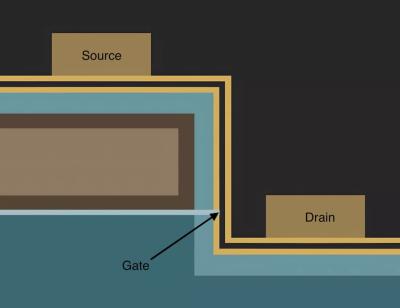The Graphene-Info weekly newsletter
Published: Tue, 03/15/22
The Graphene-Info newsletter (March 15, 2022)
Cannot read this? View it online here
Avadain receives $3.77 million grant to upscale its graphene flakes tech to mass production
U.S-based graphene flakes producer Avadain has announced that it will upscale its environmentally friendly process to mass production as part of a two-year project funded by a $3.77 million grant from the U.S. Department of Commerce’s National Institute for Standards and Technology (NIST).
“We are excited to unleash the Graphene Revolution by making large, thin and nearly defect free graphene flakes available in industrial volumes and acceptable cost,” says Bradley Larschan, CEO of Avadain.
MITO Material Solutions raises $4.6 million for new product development and scale-up
Specialty chemical company, MITO Material Solutions, raised $4.6 million dollars in a funding round that closed in late January. Funding came from a seed extension by existing and new MITO investors such as specialty chemicals solutions provider, Ingevity Corporation, and will be used to expand MITO’s Indianapolis operations, including new lab space for developing industry leading products and new composite material technologies.
MITO’s portfolio of advanced polymer additives includes a proprietary graphene-functionalization technique that creates E-GO, a hybrid polymer modifier currently in production and reportedly in use in several industries. MITO states that its additives enhance fiber-reinforced composites and thermoplastics beyond standard performance metrics and are engineered to integrate into existing production lines at an extremely low concentration with proven compatibility in a variety of material combinations.
Versarien launches Lunar 3D printed lifestyle pods
Versarien, an advanced engineering materials group and provider of graphene-enhanced cement admixture, recently announced the launch of its "Lunar" lifestyle pods. Lunar is Versarien's first 3D printed concrete product made with Cementene, Versarien's graphene-enhanced cement.

The launch involved Neill Ricketts, CEO of Versarien, unveiling a building printed with Cementene, at the Company's production facilities in Longhope, Gloucestershire. Known as Versarien Lunar, this is a milestone project for a 3D-concrete printed product with a graphene additive. The versatile pods can be used as an office, studio, gym, or leisure room. The pod's wall design shows the level of detail, flexibility and precision that can be achieved with 3D-concrete printing.
Ionic Industries acquires Imagine Intelligent Materials
Ionic Industries has announced the conclusion of a takeover of Imagine Intelligent Materials, including plant and equipment, IP and commercial relationships.
With this acquisition, Ionic intends to become a major Australian graphene player, with a portfolio of advanced nano-technologies covering energy storage and sensing applications. Ionic has paid approximately AUD$600k (around USD$434,000) cash and 30 million Ionic shares.
NematiQ announces commercial-scale graphene membrane milestone achievement
NematiQ, an Australia-based developer of graphene oxide (GO) membranes for water treatment applications, has reported commercial-scale manufacture of an innovative graphene membrane.
Over the last five years, NematiQ has developed a patented, layer-by-layer methodology to produce the graphene membrane. NematiQ has achieved a milestone by producing more than 1,000 meters worth of 1,000-millimetre-wide flat sheet graphene membrane, at speed, on an industrial roll-to-roll coating machine, showcasing its ability to manufacture graphene membrane at a commercial scale.
Researchers create miniscule graphene-MoS2 transistors
Researchers from China's Tsinghua University and East China Normal University have created a transistor with the smallest gate length ever reported. This milestone was made possible by using graphene and molybdenum disulfide and stacking them into a staircase-like structure with two steps.
 The structure of the side-wall transistor: Silicon dioxide base (dark blue), aluminum covered in aluminum oxide (brown ), the thin, light blue strip is graphene, the yellow and black strip is molybdenum disulfide, and underneath it, the hafnium dioxide.
The structure of the side-wall transistor: Silicon dioxide base (dark blue), aluminum covered in aluminum oxide (brown ), the thin, light blue strip is graphene, the yellow and black strip is molybdenum disulfide, and underneath it, the hafnium dioxide.
On the higher step, there is the source, and on top of the lower step, there is the drain. Both are made of a titanium palladium alloy separated by the surface of the stairs, which is made of a single sheet of a molybdenum disulfide (MoS2), itself resting on a layer of hafnium dioxide that acts as an electrical insulator.
Researchers deepen understanding of friction in graphene
A team of researchers from Korea's Pusan National University, led by Assistant Professor Songkil Kim, have examined the relationship between surface structures on chemical vapor deposition (CVD) grown graphene and its properties, specifically friction.
They correlated surface structures with nanoscale friction of a multi-layered graphene island. By cleaning the graphene surface using mechanical scratching of polymeric surface contamination, the team unveiled the surface structures such as small-scale and large-scale (folded) wrinkles on graphene using atomic force microscopy (AFM) and investigated their effect on nanoscale friction.








